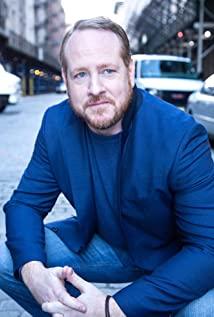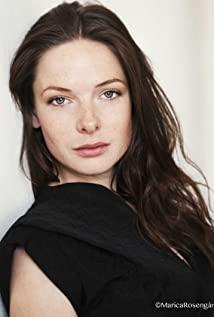Rachel, who takes the train between Westchester and Manhattan every day, sees only two houses on Beckett Street. One house retains the memories of her past, and the other is filled with the happiness she has longed for.
"The Girl on the Train" is adapted from the best-selling novel of the same name by Paula Hawkins. In the author's 15-year career as a journalist, the experience of commuting to work on the London Underground has given her inspiration for her creation. Interestingly, Paula fell into an economic crisis halfway through the writing of this novel, and her agent contacted the publishing house with unfinished manuscripts. However, once the manuscript was sent out, it attracted the looting of novel editors from all over the world. DreamWorks is the first to make its debut. It won the film adaptation rights in 2014, and it was almost a year later that the novel went on the shelves of the bookstore. This led to the first film script, and then the original publication.
It should be said that the popularity of the novel "The Girl on the Train" is the light of the 2012 North American best-selling novel "The Lost Lover". The two have many things in common-they both tell the story in the form of a character's diary, and both relentlessly expose the dark side of the marriage. But the difference is that in "The Lost Lovers", the perspectives of both parties of the marriage are involved; while "The Girl on the Train" is elaborated from a female perspective throughout the article, creating three interrelated, three-dimensional, Problematic, flawed images of women.
Rachel is divorced, but she doesn't blame her ex-husband Tom, she thinks it's all her fault. After many years of unsuccessful pregnancy after marriage, she was in a bad mood, irritable and neurotic, drunk all day long, and difficult to get along with. Not only did she lose her job, Tom also slowly disliked her and fell in love with another woman, Anna. Today, Tom and Anna are married and live in the original house, and they have children. In the house next door, another couple, Scott and Megan lived. In Rachel's eyes, this is what she should look like as "happiness" in her mind. Outside the car window, the men are tall and magnificent, and the women are graceful, always so tender and sweet, like a couple of gods and goddesses. That woman and that state of life are both what she has lost and what she wants. She imagined their respective temperaments and even named them. Until one day, Rachel suddenly discovered that the woman had cheated, and couldn't help making her angry.
As mentioned above, because the script of the movie was written before the publication of the novel, and the author Paula Hawkins had never written the script, the producer hired the screenwriter Irene Wilson to adapt the original material. Unexpectedly, after the film’s release, Irene’s first step in the adaptation attracted protests from book fans. In order to bring the film closer to the United States, she moved the London train line in the original book to New York, which naturally included the station name and street name. , There are even book fans in the United States among the protesters.
Of course, this change is also harmless, more notably the change in the overall style. Like "The Lost Lover", "The Girl on the Train" has many psychological descriptions in the original work, and this has always been a difficult point in film adaptation. Without the delicate psychological portrayal, the film's suspense will be greatly reduced. In this regard, "The Lost Lovers" did a good job, but the film was obviously bad. The screenwriter Irene was influenced by her parents who believed in bohemianism since she was a child, and she advocated freedom and unruly, so that her screenwriting style was biased towards sensory stimulation. Her previous works "Merry Boss Pretty Secretary", "Fur", "Chloe "There is no lack of descriptions of sex in ", so it continues to "The Girl on the Train." If the proportion of this aspect is too large, the inner drama is bound to be greatly reduced, and it will not constitute a tense confrontation in the external environment. As a result, the suspense atmosphere of the film is insufficient, and the reversal of the second half appears hasty, and there are some flaws in logic.
Let's look back at these three female characters. The three women have different personalities, and each of them represents a type of female personality shadow: Rachel is a compulsive personality. Many unsuccessful life makes her distressed, cowardly, self-defeating, drunk, dreaming, and at a loss for everything; Anna is compensatory His narcissistic personality was ambitious about material and fame, and he finally became morally deranged and became Tom’s mistress. However, after getting married, he found that he was self-enclosed in the cage of family life; while Megan was a marginal personality with a tendency to self-destruct. Glamorous, rebellious, frivolous, and early experiences (brother violent death, accidental drowning of a child) made her feel insecure and sink into various indecent relationships.
The wonderful thing about the original work is that the three women, as people with personality defects and psychological problems, are more or less unreliable narrators, but as observers, each of them presents a certain aspect of objective facts in their narration. . Through the author's ingeniously designed timeline, the events told by the three characters are intertwined and overlapped, which just reflects the original appearance of the event.
The various ties and conflicts between the three women reflect the projection and transfer of shadows. After witnessing Megan's derailment, Rachel projected her anger towards Anna on Megan, eager to tell Scott the fact of Megan's derailment. As everyone knows, the awakening self-consciousness has noticed the shadow of his personality in Megan, and reshapes his complete personality by casting and transferring his shadow on other individuals. Similarly, Anna realized that her vitality was gradually exhausted in the barriers of marriage, began to be suspicious of Tom and blamed Rachel for the problems in the marriage, and mentioned in the narration that she felt that she was going to become the Rachel of that year. This is also through The projection and transfer of the shadow of one's own personality complete the process of reshaping. Finally, through their own nature, Rachel and Anna desperately want to get rid of the shackles of the shadows, and they work together to cause Tom's death.
Compared with the meticulous portrayal of the three women in the marriage, the male role is much eclipsed. To describe Tom in the film, perhaps the simple word "scumbag" is the most appropriate. Derailed Anna during her marriage with Rachel, and then concocted Rachel’s various hallucinations and caused her to give up on her own. In her marriage with Anna, Megan derailed and killed Megan after she became pregnant. The full evil is full. However, although Rachel and Anna got vent in the process of killing the scumbag, perhaps at the same time another shackle and personality shadow will accompany him for life, and I don't know when they will be released.
♑
View more about The Girl on the Train reviews











